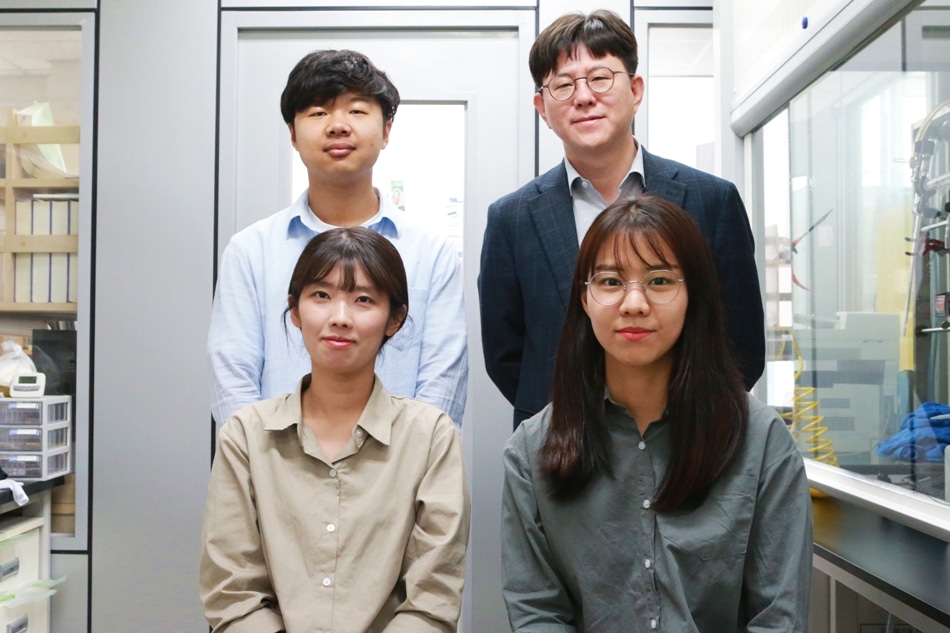Jun 27 2019
By incorporating hydroquinone, a skin-bleaching element, to a well-established ‘metal organic framework’, its copper ions are modified such that this porous material becomes extremely stable in water.
 Professor Nak Cheon Jeong (right back) and his team at DGIST collaborated with researchers in Korea to find ways to stabilize HKUST-1 in water. (Image credit: DGIST)
Professor Nak Cheon Jeong (right back) and his team at DGIST collaborated with researchers in Korea to find ways to stabilize HKUST-1 in water. (Image credit: DGIST)
We developed a new method to enhance the water stability of metal organic frameworks, with potential for applications that can effectively filter and purify air from ultrafine dust without decomposing due to humidity.
Nak Cheon Jeong, Materials Scientist, DGIST
The Korean scientists have described their findings in the Journal of the American Chemical Society.
Metal organic frameworks, or MOFs for short, are developed from metal ions bonded by organic links. They organize in a manner that promotes the creation of internal cage-like structures, offering the porous nature to this material. MOFs have a remarkable surface area in comparison to other porous materials. Due to this, and the capability of researchers to adjust their structures, they are used in a broad variety of applications such as molecule separation, gas uptake, catalysis, and drug delivery. A majority of MOFs degrade in the presence of water and humidity, and hence, researchers have been seeking ways to make them more resilient.
Jeong and his team discovered that treating a well-known copper-based MOF, known as HKUST-1, with hydroquinone at 80 °C provided so much stability to the material that it did not decompose even after weeks of immersion in water or even after a couple of years of exposure to humid air.
Copper ions and their organic links in HKUST-1 organize to create small and large cages with paddlewheel-shaped metal ion nodes. Typically, water molecules bind to elements within this MOF, dislocating the bonds between the organic links and copper ions, and making the material to decompose or change into a non-porous solid. Alternatively, hydroquinone treatment results in an extremely stable HKUST-1 in water.
Jeong and his colleagues identified that one electron from hydroquinone is shifted to cupric ions (Cu2+) within HKUST-1, transforming them to cuprous ions (Cu+). This is a self-limiting transformation: only up to 30% of the cupric ions transform in this manner. Half of the Cu+ ions stay in their positions on the paddlewheel cages of HKUST-1. However, the other half of the Cu+ ions create complexes that separate from the structure and become caught within the smaller cages of the material, similar to a ship-in-a-bottle.
More research is required to precisely understand how these variations result in such a considerable enhancement in HKUST-1’s stability in water.
Jeong and his colleagues think that the same concept could be used on other similar copper-based paddlewheel MOFs. They intend to carry out a follow-up study on potential practical applications for their method.